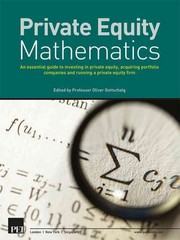Question
Assume the risk-free rate is 4% (rf = 4%), the expected return on the market portfolio is 12% (E[rM] = 12%) and the standard deviation
Assume the risk-free rate is 4% (rf = 4%), the expected return on the market portfolio is 12% (E[rM] = 12%) and the standard deviation of the return on the market portfolio is 16% (M = 16%). (All numbers are annual.) Assume the CAPM holds. *PLEASE HELP WITH E-H; INCLUDED ADDITIONAL QUESTIONS FOR REFERENCE*
1a. What are the expected returns on securities with the following betas: (i) = 1.0, (ii) = 1.5, (iii) = 0.5, (iv) = 0.0, (v) = -0.5?
1b. What are the betas of securities with the following expect returns: (i) 12%, (ii) 20%, (iii) -4%?
1c. What are the portfolio weights (in the risk-free asset and the market portfolio) for efficient portfolios (portfolios on the efficient frontier) with expected returns of (i) 8%, (ii) 10%, (iii) 4%, (iv) 24%.
1d. What are the portfolio weights (in the risk-free asset and the market portfolio) for efficient portfolios (portfolios on the efficient frontier) with standard deviations of (i) 4%, (ii) 20%, (iii) 16%.
1e. What are the correlations between the portfolios in (i) Q.1c(i) and Q.1c(iv), (ii) Q.1d(i) and Q.1d(ii)?
1f. Can securities or portfolios with the following characteristics exist in equilibrium, assuming the CAPM holds (yes or no): (i) expected return 0%, standard deviation 40%, (ii) expected return 9%, standard deviation 9%, (iii) expected return 34%, standard deviation 70%.
1g. A stock with a beta of 1 ( = 1.0) has a current price of $40/share. Assuming it pays no dividends, what is the expected price in 1 year? If it is expected to pay a dividend of $4/share at the end of the year, what is the expected price in 1 year (after the payment of the dividend)? If the beta of the stock is 2 ( = 2.0), what are the expected prices under these 2 scenarios, i.e., no dividends or a dividend of $4
1h. For a moment (but just a moment) assume that the CAPM may not hold. In other words, alpha () is non-zero. If a non-dividend paying stock with a beta of 1 ( = 1.0) has a current price of $50/share and an expected price in 1 year of $60/share (based on your personal analysis of the companies prospects), what is the alpha () of this stock? What if the beta is 2 ( = 2.0)? What if the beta is 3 ( = 3.0)?
Step by Step Solution
There are 3 Steps involved in it
Step: 1

Get Instant Access to Expert-Tailored Solutions
See step-by-step solutions with expert insights and AI powered tools for academic success
Step: 2

Step: 3

Ace Your Homework with AI
Get the answers you need in no time with our AI-driven, step-by-step assistance
Get Started


